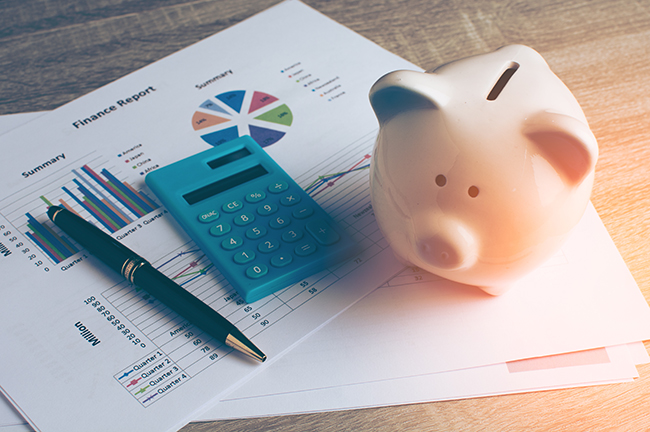For almost a decade now, Canadians have been living, and borrowing, in an ultra-low interest rate environment. As of the end of April 2018, the bank rate (from which commercial interest rates are derived) stood at 1.5%. The last time that the bank rate was over 1.5% was in December of 2008. Effectively, adult Canadians who are under the age of 30 have had no experience of managing their finances in high (or even, by historical standards, ordinary) interest rate environments.
The prolonged period of low interest rates which followed the financial crisis of 2008-09 coincided, not surprisingly, with an explosion in the amount of debt owed by both individual Canadians and by families. In the fall of 2005, the ratio of debt to disposable income for an average Canadian family stood at 93%. In the third quarter of 2017 that ratio stood at just less than double that amount, or 171%.
Warning for High Debt Loads
For several years financial advisers and government and banking officials have been sounding warnings that the debt loads which Canadians were carrying were likely sustainable only at the extremely low interest rates then in effect. Their concern was that when, inevitably, those rates returned to historically “normal” levels the burden of repaying, or even servicing those debts, would be unsustainable.
Whether those warnings were or weren’t heeded is becoming a moot question, as the era of reliably ultra-low interest rates is effectively coming to an end. The Bank of Canada has raised interest rates three times in the past 10 months, in July and September 2017 and again in January of 2018. Prior to July 2017, the last interest rate increase took place in September of 2010. As well, as the Bank has made clear in its regular announcements on the subject, the longer-term interest rate trend is an upward one.
When talking about debt, and debt management, it’s important to remember that not all debt is created equal. Specifically, it’s necessary to draw a distinction between secured and unsecured debt. Put simply, the former is debt which is secured by the value of an underlying asset and, if the debtor fails to make payments on the debt, the lender is entitled to seize that underlying asset and sell it to satisfy any outstanding debt amount owed.
The type of secured debt most familiar to Canadians is, of course, a mortgage. Unsecured debt, on the other hand, is provided solely on the strength of the borrower’s promise to repay, and credit cards are the most common example of unsecured debt owed by Canadians.
Unsecured Debt as Interest Rates Rise
While any type of debt can cause problems for borrowers, when interest rates go up it’s usually those who are carrying unsecured debt who are the first to feel the pinch. Not only is the rate of interest payable on unsecured debt always higher than that levied on secured debt, the interest rate on unsecured debt is usually a “variable” rate, meaning that it will go up every time interest rates increase, and the monthly minimum payment required will increase proportionately.
And, of course, debtors whose debt is secured by an underlying asset and who find that such debt is no longer manageable always have the “out” of selling that asset and using the proceeds to retire the outstanding balance of the loan, while those who owe unsecured debt have no such option.
It’s easy to assume from the overall figures respecting the debt load of Canadians that having an outstanding balance on one or more credit cards or lines of credit is the norm. However, an Ipsos Global News year-end poll discloses some perhaps unexpected results, with both good and bad implications. Those survey results, which can be found on the Ipsos website, was done in December of 2017. It found that the average unsecured (i.e., non-mortgage) debt held by individual Canadians was $8,539.50.
54% of Canadians Carry Unsecured Debt
However, the survey also found that nearly half of Canadians (46%) had no consumer debt whatsoever. Consequently, when it comes to debt, Canadians seem to fall about evenly into one of two very distinct and different groups. The minority (by a small percentage) are free of any unsecured debt – no line of credit debt and no credit card balances. But it’s a very different picture for the other 54% who are carrying, on average, around $15,000 in unsecured debt per person. And, for 12% of those surveyed, the amount of unsecured debt owed was more than $25,000.
For anyone who is carrying outstanding unsecured debt, the obvious advice is to get the debt paid down as quickly as possible, especially when interest rates are rising. That is, however, easier said than done, especially when the interest component of the debt, and consequently the required monthly minimum payments, are steadily increasing. Between 19% and 22% of respondents in the IPSO Global News poll indicated that they were “not very comfortable” or “not at all comfortable” with their ability to meet their current monthly debt payment obligations and/or their ability to pay down their debt in a timely manner.
Even where repayment of the debt over the short term isn’t a realistic expectation, such individuals are not without options. The best strategy to be pursued by those carrying significant amounts of unsecured debt which can’t be paid off over the short-term would be to try to lower the interest rate on such debt. There are a couple of ways in which that can be done.
Lower Interest Rates for Secured Debt
If the debtor owns an asset (usually a house) against which he or she can borrow, turning the debt from unsecured to secured, the interest rate payable on such borrowing will certainly be lower than the rate currently being paid. Where there is no such asset, the debtor can seek a consolidation loan from a financial institution, in which all of the outstanding debts from every source are combined into a single loan at a lower rate of interest, and a fixed repayment schedule. Much unsecured debt owed by Canadians is in the form of credit card debt, which carries some of the highest interest rates around.
If neither of those options are available, then the next step would be to try to obtain a lower credit card interest rate. If the debt is in good standing – that is, payments have been made on time and in at least the minimum amount – the credit card company may be willing to reduce the interest rate imposed, especially if it is clear that the borrower will not be able to continue to make payments at higher rates. If the credit card company is unwilling to do so, the debtor may be able to seek out better rates elsewhere.
Credit card companies regularly seek to bring in new business by offering the opportunity to transfer in balances from other cards and to have those balances benefit from a very low (or even 0%) rate of interest for a period of time – usually 6 months to a year. Where a new card with a much lower interest rate can be obtained, regular payments made will reduce the outstanding balance more quickly, since less of that payment is going to meet interest charges.
Each of these options assumes a willingness and an ability on the part of the individual to make debt repayment a priority, working on his or her own. For some, that’s not easy, or even possible. As well, some individuals are already in financial difficulty – unable to make the minimum monthly required payment, or having missed payments and being pursued by collection agencies. In both those situations, obtaining help to deal with the debt repayment process is likely needed.
That help is available through debt and credit counselling provided by any number of non-profit agencies. Those agencies work with individuals, and with their creditor(s), to create both a realistic budget and a manageable debt repayment schedule. More information on the credit counselling process, and a listing of such non-profit agencies can be found at Credit Counselling Canada.
The information presented is only of a general nature, may omit many details and special rules, is current only as of its published date, and accordingly cannot be regarded as legal or tax advice. Please contact our office for more information on this subject and how it pertains to your specific tax or financial situation.

